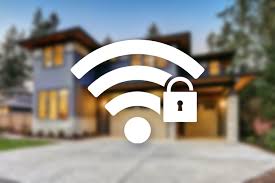Imagine navigating the intricate landscape of network security akin to a seasoned explorer. As you consider delving into DMZ mode for your network, the concept of fortifying your digital perimeter might be both intriguing and daunting.
How can this setting enhance your security measures without impeding functionality? Stay tuned to uncover the nuances of DMZ configuration and its implications on safeguarding your network from potential threats.
Understanding DMZ Mode
If you want to enhance your network security, understanding DMZ Mode is crucial. DMZ, which stands for Demilitarized Zone, is a vital component in network security architecture. It acts as a buffer zone between the internet and your private network, providing an additional layer of protection. In essence, the DMZ segregates your public-facing services, such as web servers or email servers, from the rest of your internal network.
Benefits of DMZ Configuration
To fully appreciate the significance of DMZ Mode in bolstering your network security, let’s now examine the advantages that come with configuring a DMZ.
By setting up a DMZ, you create a buffer zone between your internal network and the internet, enhancing your overall security posture. One key benefit is improved protection against external threats. The DMZ isolates internet-facing services, such as web servers or email servers, reducing the risk of direct attacks on your internal network.
Additionally, implementing a DMZ allows for better network segmentation, enabling you to control and monitor traffic more effectively. This segmentation enhances security by limiting the potential impact of a breach or unauthorized access.
Moreover, a DMZ configuration can enhance the performance of your network by offloading some external-facing services, optimizing resource allocation, and improving overall network efficiency.
Implementing DMZ for Network Security
Consider incorporating a strategically positioned DMZ to bolster the security of your network infrastructure. A demilitarized zone (DMZ) acts as a secure intermediary network between your internal network and the external internet. By implementing a DMZ, you create an additional layer of defense that helps protect your critical assets from potential cyber threats.
To set up a DMZ effectively, you need to carefully design the network architecture. Place your public-facing servers, such as web servers or email servers, in the DMZ segment. These servers can interact with external users while being isolated from your internal network. Implement strong access controls and firewall rules to regulate the traffic flowing in and out of the DMZ. Regularly monitor and update these security measures to ensure ongoing protection.
DMZ Mode Vs. Traditional Firewalls
When comparing DMZ mode to traditional firewalls, you’ll notice distinct differences in their approach to network security. DMZ mode creates a separate network zone that sits between the internal network and the internet, allowing for more granular control over incoming and outgoing traffic. Traditional firewalls, on the other hand, rely on a single perimeter defense to filter all traffic entering and exiting the network.
In DMZ mode, specific rules can be set up to regulate traffic flow to and from the internal network, ensuring that only necessary data passes through. This setup is beneficial for hosting public-facing services like websites or email servers, as it adds an extra layer of protection by isolating these services from the internal network. Traditional firewalls, while effective at blocking unauthorized access, may not offer the same level of segmentation and control as a DMZ setup.
Best Practices for DMZ Deployment
Comparing DMZ mode to traditional firewalls showcases the importance of implementing best practices for DMZ deployment to enhance network security effectively. When deploying a DMZ, it’s crucial to adhere to certain best practices to ensure a robust security posture.
Firstly, segment your network effectively by placing web servers and other public-facing services in the DMZ, isolating them from the internal network. This isolation limits potential exposure in case of a breach.
Secondly, restrict traffic flow between the DMZ and internal network using strict firewall rules. By controlling traffic flow, you can prevent unauthorized access to critical systems.
Thirdly, regularly update and patch systems within the DMZ to address any vulnerabilities promptly. Outdated systems can serve as entry points for attackers.
Additionally, implement intrusion detection and prevention systems in the DMZ to monitor and block suspicious activities in real-time.
Lastly, conduct regular security audits and penetration testing to identify and address any security gaps proactively. By following these best practices, you can strengthen your network security and protect against potential threats effectively.
Conclusion
Overall, DMZ mode offers a valuable layer of protection for your network by segregating your internal network from external threats.
By implementing DMZ configuration, you can enhance your network security and minimize the risk of unauthorized access.
Remember to follow best practices for DMZ deployment to ensure the effectiveness of your security measures.
Consider leveraging DMZ mode as a powerful tool in safeguarding your network infrastructure.

